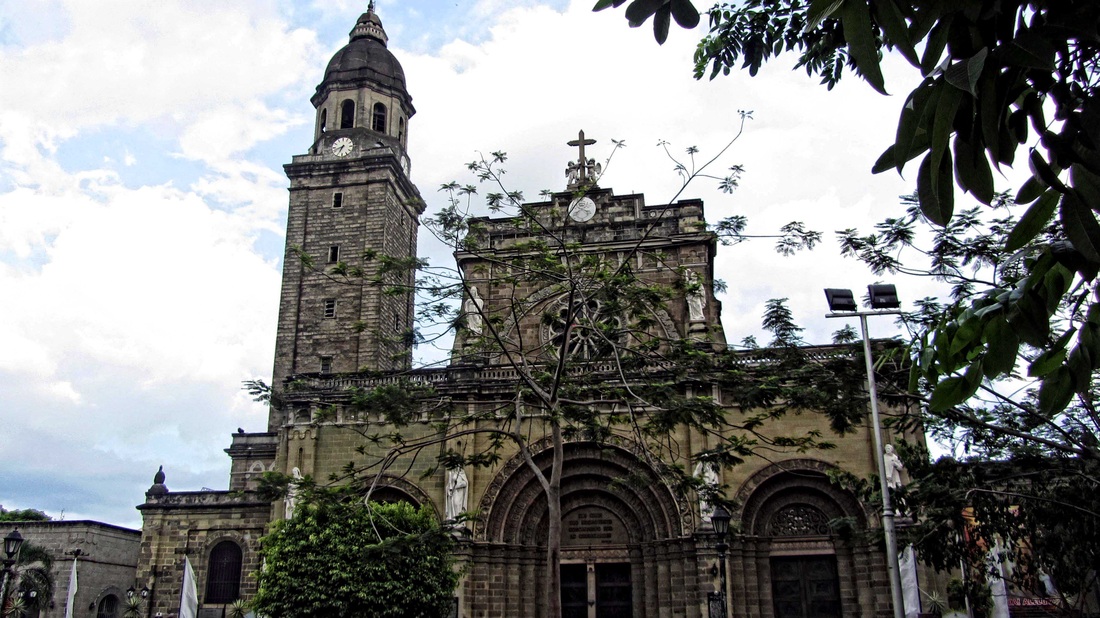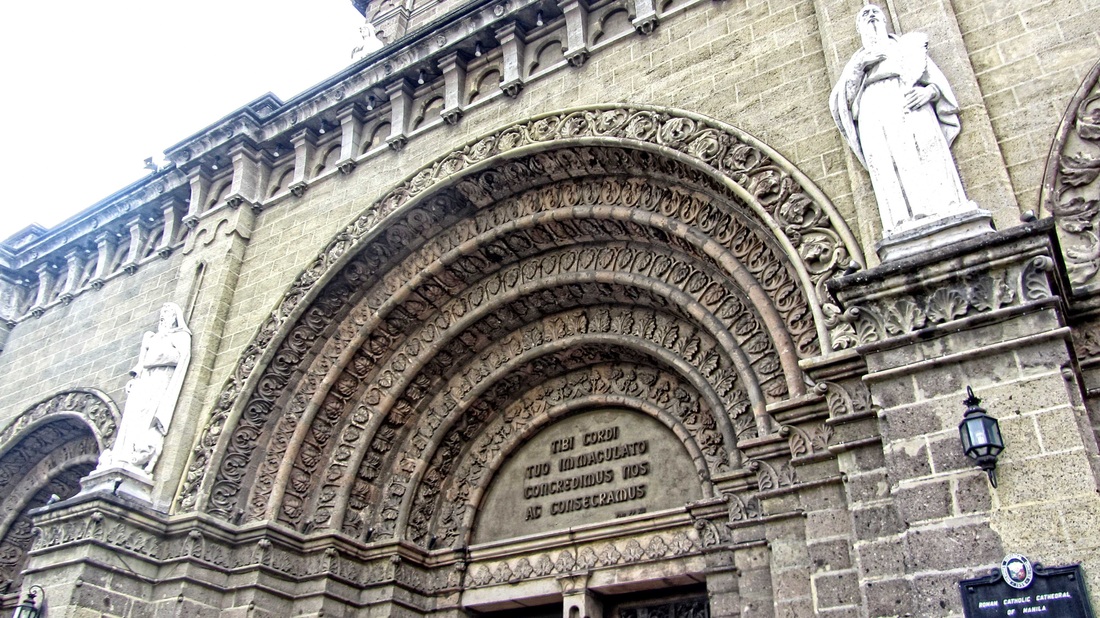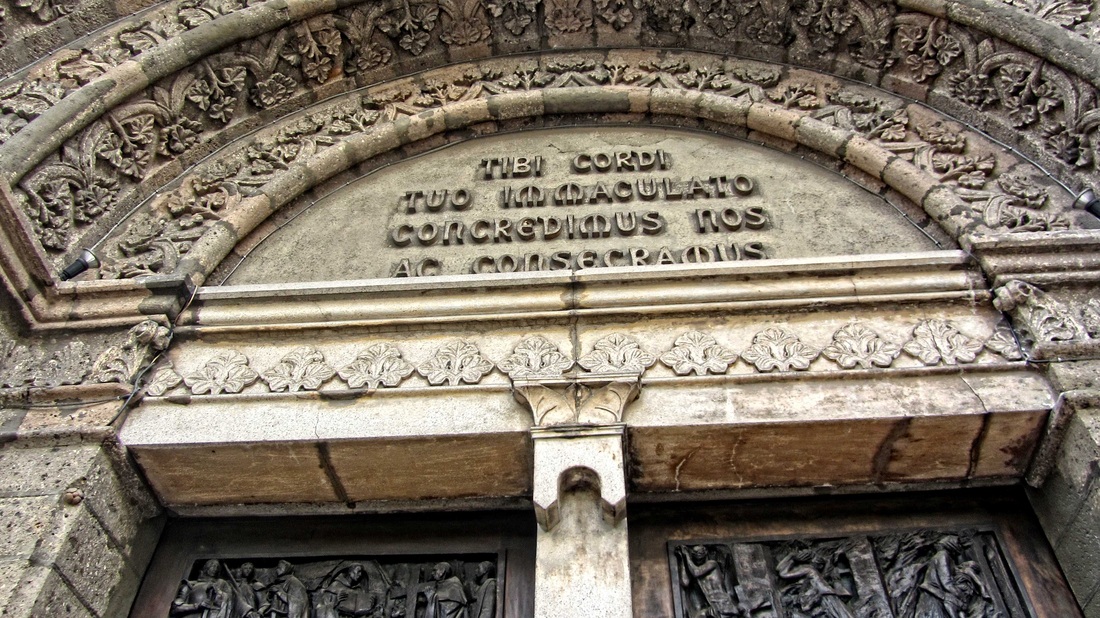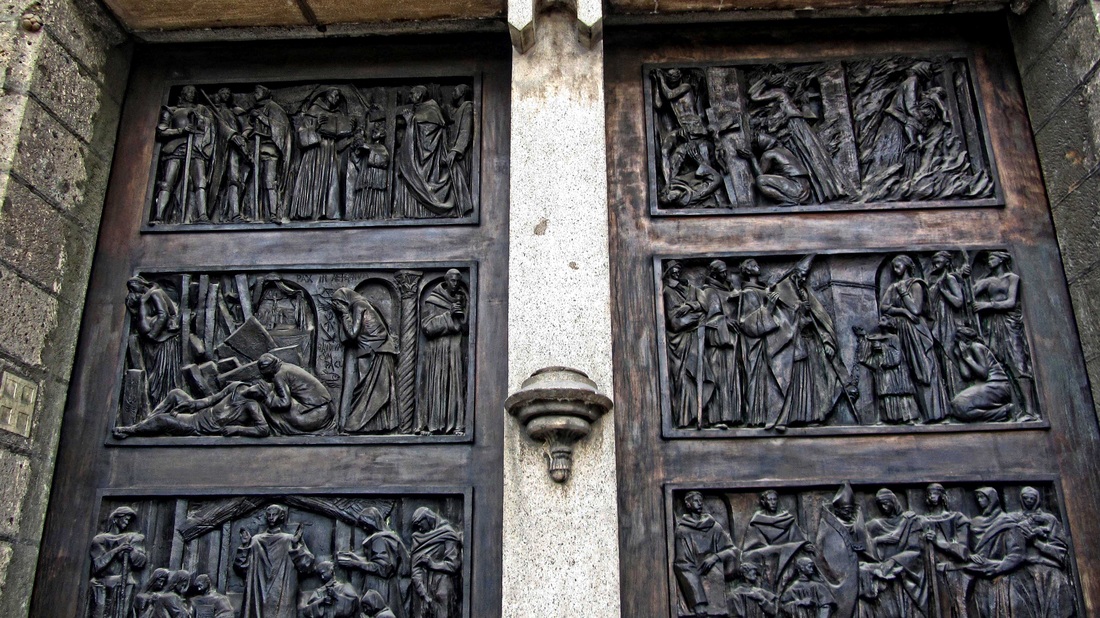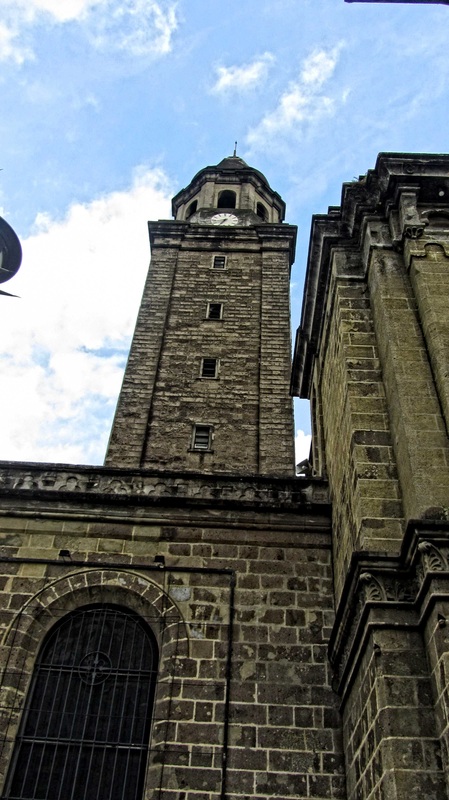The Manila Metropolitan Cathedral-Basilica, officially known as the Metropolitan Cathedral Basilica of the Immaculate Conception and informally as Manila Cathedral, is a prominent Latin Rite Roman Catholic basilica located in Manila, Philippines, honoring the Blessed Virgin Mary as Our Lady of the Immaculate Conception, the Principal Patroness of the Philippines.
The cathedral originally started as the Church of Manila and was officially established in 1571 by asecular priest, Padre Juan de Vivero, who arrived in Manila Bay in 1566. De Vivero, the chaplain on the galleon of San Geronimo, was sent by the Archbishop of Mexico, Alonso de Montúfar, to establish Christianity as the spiritual and religious administration in newly-colonized Philippines. De Vivero later became the vicar-general and the first ecclesiastical judge of the city of Manila.
Miguel López de Legazpi, the conquistador of the city, chose the location of the church and placed under the patronage of Santa Potenciana. The first parish priest of the church was Padre Juan de Villanueva.
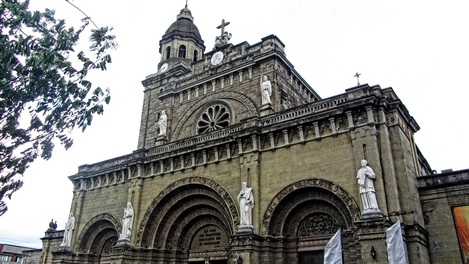
When the church was raised to a cathedral in 1579, a new structure made from nipa, wood and bamboo was constructed in 1581 by Bishop Domingo de Salazar, the first Bishop of Manila. The new structure was consecrated on December 21, 1581, formally becoming a cathedral.
The structure was destroyed by fire in 1583, which started during the funeral Mass for Governor-General Gonzalo Ronquillo de Peñalosa in San Agustin Church that razed much of the city.
The second cathedral, which was made of stone, was built in 1592. It was destroyed by an earthquake in 1600. Construction of the third cathedral began in 1614. The new structure, consisting of three naves and seven chapels, was blessed in 1614. It was toppled by another earthquake which shook Manila in 1645. The fourth cathedral was constructed from 1654 to 1671.
It was severely damaged in 1863 by a very strong earthquake that also damaged the palace of the Governor General of the Philippines. In 1880, another earthquake toppled its bell tower, rendering the cathedral towerless until 1958. The seventh cathedral was constructed from 1870 to 1879. It was solemnly blessed in December 1879. The cross atop the central dome is a reference point of astronomical longitudes of the archipelago. This incarnation of the cathedral was reduced to rubble by the bombing in 1945 during the Battle of Manila.
The present cathedral was constructed from 1954 to 1958 during the tenure of Cardinal Rufino Jiao Santos and under the supervision of the notable Filipino architect Fernando H. Ocampo.
In 1937, the International Eucharistic Congress was held in the Philippines in which the cathedral played an integral part in promoting eucharistic beliefs. Both a cathedral stamp and medal was struck in commemoration of the event and was made by the official manufacturer of medals for the Congress of the Philippines at the time, the sculptor Crispulo Zamora.
In 1970 Pope Paul VI made an apostolic visit and celebrated Mass in the cathedral. Pope John Paul IIissued a papal bull Quod Ipsum on April 27, 1981, elevating the shrine to a minor basilica through his own Motu Proprio. The papal bull was co-signed and attested by the Vatican Secretary of State, Cardinal Agostino Casaroli. In the same papal bull, John Paul II reiterated that the Pope Paul VI's papal decree of June 6, 1968 be eternally preserved and enforced to the merits and titles of the cathedral as its own basilica.
In 2008 the cathedral's 50th restoration anniversary was celebrated highlighted by the second Manila Cathedral Pipe Organ Festival from December 2 to 10, organized by the Catholic Bishops' Conference of the Philippines.
In February 2011 the Archdiocese of Manila relocated the bells of the cathedral to the ground level to prevent tower collapse as exhibited in the past earthquakes. In January 2012, the cathedral replaced the bells, personally cast by blacksmith Friedrich Wilhelm Schilling of Heidelberg Germany, in 1958. According to the new marker installed by Cardinal Gaudencio Rosales, the newly installed bells are the largest bells actively used in the Philippines. A total of seven Carillon bells were permanently installed in the ground level of the belfry weighing at 17 metric tons.
The cathedral underwent repairs to make it more earthquake-resistant and prevent subsidence from 2012. During such period, the San Fernando de Dilao Church has been designated as the temporary official church (Pro-Cathedral) of the Archdiocese of Manila
The structure was destroyed by fire in 1583, which started during the funeral Mass for Governor-General Gonzalo Ronquillo de Peñalosa in San Agustin Church that razed much of the city.
The second cathedral, which was made of stone, was built in 1592. It was destroyed by an earthquake in 1600. Construction of the third cathedral began in 1614. The new structure, consisting of three naves and seven chapels, was blessed in 1614. It was toppled by another earthquake which shook Manila in 1645. The fourth cathedral was constructed from 1654 to 1671.
It was severely damaged in 1863 by a very strong earthquake that also damaged the palace of the Governor General of the Philippines. In 1880, another earthquake toppled its bell tower, rendering the cathedral towerless until 1958. The seventh cathedral was constructed from 1870 to 1879. It was solemnly blessed in December 1879. The cross atop the central dome is a reference point of astronomical longitudes of the archipelago. This incarnation of the cathedral was reduced to rubble by the bombing in 1945 during the Battle of Manila.
The present cathedral was constructed from 1954 to 1958 during the tenure of Cardinal Rufino Jiao Santos and under the supervision of the notable Filipino architect Fernando H. Ocampo.
In 1937, the International Eucharistic Congress was held in the Philippines in which the cathedral played an integral part in promoting eucharistic beliefs. Both a cathedral stamp and medal was struck in commemoration of the event and was made by the official manufacturer of medals for the Congress of the Philippines at the time, the sculptor Crispulo Zamora.
In 1970 Pope Paul VI made an apostolic visit and celebrated Mass in the cathedral. Pope John Paul IIissued a papal bull Quod Ipsum on April 27, 1981, elevating the shrine to a minor basilica through his own Motu Proprio. The papal bull was co-signed and attested by the Vatican Secretary of State, Cardinal Agostino Casaroli. In the same papal bull, John Paul II reiterated that the Pope Paul VI's papal decree of June 6, 1968 be eternally preserved and enforced to the merits and titles of the cathedral as its own basilica.
In 2008 the cathedral's 50th restoration anniversary was celebrated highlighted by the second Manila Cathedral Pipe Organ Festival from December 2 to 10, organized by the Catholic Bishops' Conference of the Philippines.
In February 2011 the Archdiocese of Manila relocated the bells of the cathedral to the ground level to prevent tower collapse as exhibited in the past earthquakes. In January 2012, the cathedral replaced the bells, personally cast by blacksmith Friedrich Wilhelm Schilling of Heidelberg Germany, in 1958. According to the new marker installed by Cardinal Gaudencio Rosales, the newly installed bells are the largest bells actively used in the Philippines. A total of seven Carillon bells were permanently installed in the ground level of the belfry weighing at 17 metric tons.
The cathedral underwent repairs to make it more earthquake-resistant and prevent subsidence from 2012. During such period, the San Fernando de Dilao Church has been designated as the temporary official church (Pro-Cathedral) of the Archdiocese of Manila

